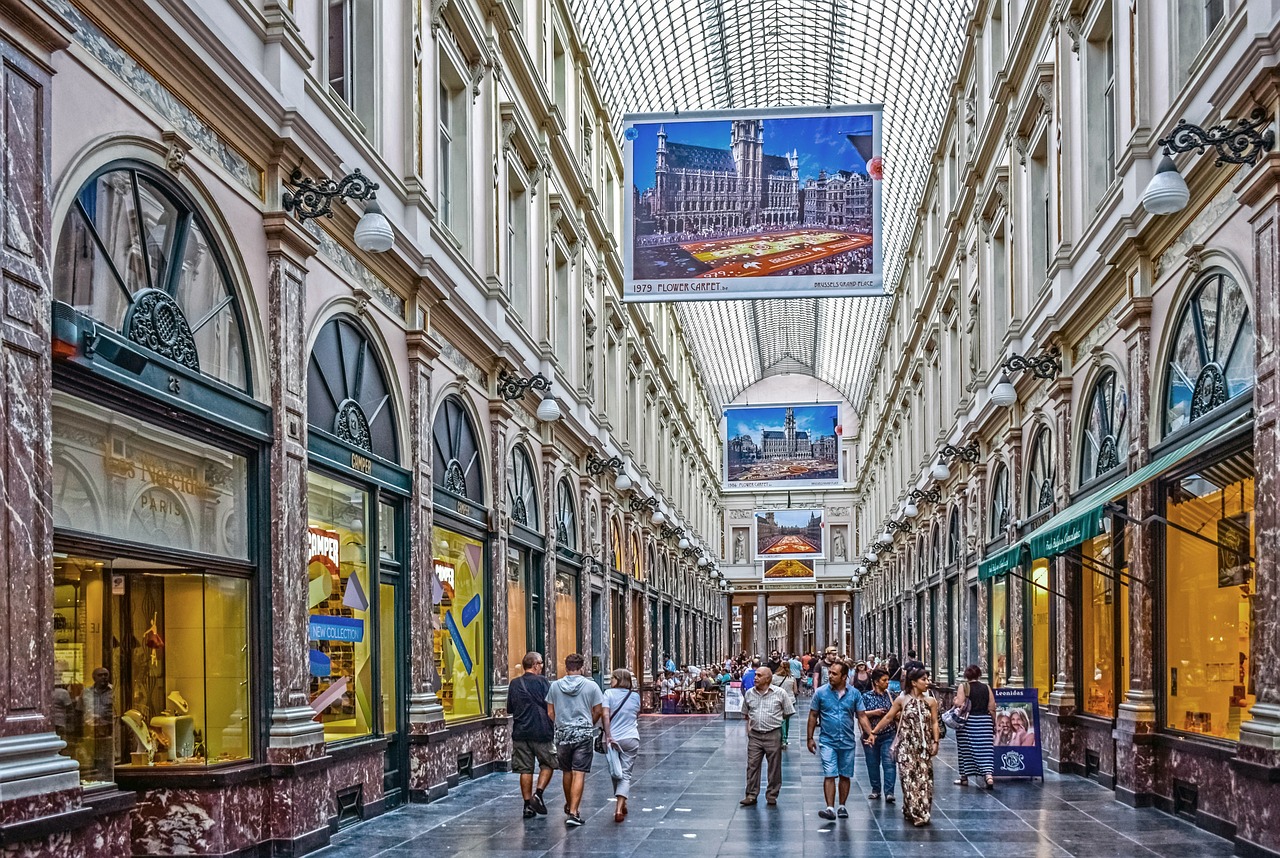Navigating the Australian Shopping Landscape: A Comprehensive Guide to Retail Trends, Consumer Behaviour, and Unique Shopping Experiences
- Written by Consumables

Australia, known for its vibrant cities and stunning landscapes, also boasts a dynamic shopping scene that caters to a variety of tastes and preferences. This guide aims to provide you with a comprehensive understanding of the Australian shopping landscape, highlighting everything from popular shopping hotspots to current retail trends, consumer habits, and strategies for a rewarding shopping experience.
- Popular Shopping Destinations in Australia:
Australia's major cities are renowned for their diverse shopping experiences. Sydney, the country's largest city, is known for its upscale shopping districts like Pitt Street Mall, the Queen Victoria Building, and Westfield Sydney, where you can find a plethora of international and local brands. Melbourne, the country's fashion capital, is famous for its fashion boutiques and shopping precincts such as Bourke Street Mall, Chapel Street, and Melbourne Central. Brisbane offers a mix of modern shopping malls and quirky markets, including the Queen Street Mall, James Street, and the South Bank Markets. Perth, on the other hand, features shopping hubs like Hay Street Mall, Murray Street Mall, and the luxury precinct of King Street. Adelaide, known for its laid-back lifestyle, offers Rundle Mall, a popular pedestrian shopping street, as well as the Adelaide Central Market, a haven for fresh produce.
- Retail Trends and Consumer Behaviour:
The retail landscape in Australia has been significantly influenced by the COVID-19 pandemic. This has led to changes in shopping patterns, such as panic buying and the rise of contactless and online shopping. The convenience and safety of online shopping have led to substantial growth in this sector, with an increase in the number of households participating and higher online retail sales. New consumer behaviours have also emerged, with consumers making fewer trips but purchasing larger baskets, embracing online shopping, and placing a greater focus on health and wellness.
- Tips for a Successful Shopping Experience:
To make the most of your shopping experience in Australia, it's important to do some research and planning. Look for information on stores, products, and prices before heading out or making online purchases. Comparing prices across different retailers can ensure you're getting the best deal. Take advantage of seasonal sales, promotional events, and discount periods like Black Friday or Boxing Day to save money. Familiarise yourself with the return policies of the stores you shop at, especially for online purchases. And don't forget to seek local recommendations or utilise online resources for recommendations on unique shopping experiences and local specialties.
- Impact of Online Shopping and E-commerce Platforms:
The rise of online shopping has had a significant impact on the retail landscape in Australia. E-commerce has experienced significant growth, with more consumers opting for the convenience and variety offered by online platforms. This has led to increased competition among retailers, leading to a focus on improving online experiences and offering competitive pricing and shipping options.
- Variety of Products Available:
Australia offers a diverse range of products to cater to different consumer needs. The fashion scene ranges from high-end designer brands to boutique shops and local designers. Major electronics retailers provide a wide selection of products, including smartphones, laptops, home appliances, and entertainment systems. Australia is also known for unique local products like Aboriginal art, Australian wines, UGG boots, and Australian-made skincare products.
- Pricing, Discounts, and Sales Seasons:
Pricing strategies in Australia vary across different sectors. However, retailers often offer discounts throughout the year, with higher discounts during sales seasons. Major sales seasons in Australia include the Boxing Day sales (December 26), end-of-season sales, and Click Frenzy events. Online platforms often have exclusive deals and promotional codes, providing additional opportunities for savings.
- Importance of Customer Service:
Customer service plays a significant role in the Australian retail landscape. Australian retailers value good customer service and strive to provide a positive shopping experience. Most retailers have customer-friendly return and exchange policies to ensure customer satisfaction, and staff are often trained to provide helpful and friendly service.
- Role of Shopping Malls:
Shopping malls play a significant role in Australia's retail landscape, offering a one-stop shopping experience with a mix of stores, entertainment, and dining options. These malls provide amenities such as parking facilities, food courts, and entertainment options, enhancing the overall shopping experience. They also often host events and promotions, adding to the excitement of the shopping experience.
- Unique Shopping Experiences or Events:
Australia offers a variety of unique shopping experiences and events. Farmers' markets are a common feature across the country, where you can find fresh produce, local artisanal products, and homemade goods. Pop-up shops are becoming increasingly popular, allowing local designers and entrepreneurs to showcase their products in temporary retail spaces. These unique experiences provide an opportunity to discover local brands and products and engage with the local community.
- Cultural Aspects of Shopping in Australia:
Shopping in Australia is not just about buying goods; it's also about experiencing the local culture. Australians value a relaxed and casual shopping experience, and friendly customer service is highly regarded. There is also a growing interest in ethical and sustainable shopping practices, with consumers increasingly supporting local businesses and environmentally conscious brands.
Exploring the Australian Shopping Landscape:
- Sustainable Shopping Practices and Eco-Friendly Brands:
In recent years, Australia has seen a significant shift towards sustainable shopping practices and eco-friendly brands. Consumers are becoming increasingly conscious of their environmental impact and are seeking out brands that align with their values. This has led to a surge in popularity for brands that prioritise sustainability, use ethically sourced materials, and employ fair trade practices. From fashion to food, beauty products to home goods, these eco-friendly brands are making a positive impact by reducing waste, minimising their carbon footprint, and promoting ethical labor practices. As consumers continue to prioritise sustainability, we can expect to see an even greater emphasis on eco-friendly shopping practices in the future.
- Comparison Between Shopping in Major Cities and Regional Areas:
Shopping experiences in Australia can vary greatly depending on whether you're in a major city or a regional area. Major cities like Sydney and Melbourne are known for their bustling shopping districts, high-end boutiques, and international brands. These cities offer a wide range of shopping experiences, from luxury retail to trendy streetwear, and are often at the forefront of the latest fashion trends. On the other hand, shopping in regional areas offers a different kind of charm. These areas often feature local boutiques, artisanal goods, and unique products that reflect the local culture and lifestyle. While they may not have the same breadth of options as the major cities, regional shopping experiences often provide a more personal and relaxed shopping experience.
- Tax-Free Shopping for Tourists:
Australia offers a fantastic opportunity for tourists to shop tax-free through the Tourist Refund Scheme (TRS). This scheme allows tourists to claim a refund on the Goods and Services Tax (GST) and Wine Equalisation Tax (WET) paid on goods bought in Australia and taken out of the country. This can result in significant savings, particularly for high-value items. To claim the refund, tourists must have spent a minimum amount at a single business within 60 days of leaving Australia, carry the goods and original tax invoices onboard the aircraft or ship when leaving, and present the goods and tax invoices to a TRS officer for inspection. This tax-free shopping opportunity makes Australia an even more attractive destination for tourists looking to shop.
- Shopping Etiquette and Customs in Australia:
Shopping in Australia comes with its own set of etiquette and customs. Australians value a relaxed and friendly shopping environment, and customer service is highly regarded. It's common to be greeted by store staff upon entering a shop, and it's considered polite to return the greeting. Bargaining is generally not a common practice in Australia, with prices usually fixed in most retail environments. However, it may be acceptable in some informal markets or with high-ticket items like jewellry or cars. It's also customary to queue in an orderly fashion when waiting to pay, and contactless payments are widely accepted and often preferred.
- Safety and Security Measures in Shopping Areas:
Safety and security are taken seriously in Australian shopping areas. Most shopping centres and stores have security personnel and CCTV cameras to ensure the safety of shoppers. It's also common for larger stores to have electronic security tags on items to prevent theft. In addition, many shopping centres provide well-lit parking areas, security escorts to vehicles upon request, and lost property services. While Australia is generally a safe country, it's always important for shoppers to be aware of their surroundings, keep their personal belongings secure, and report any suspicious activity to security personnel or the police.
- Accessibility and Inclusivity in Shopping Spaces:
Australia is committed to ensuring accessibility and inclusivity in shopping spaces. Most shopping centers and stores are wheelchair accessible, with wide aisles, accessible fitting rooms, and wheelchair-friendly checkouts. Many also provide wheelchair hire services, accessible parking spaces, and tactile indicators for visually impaired shoppers. In addition, a growing number of stores are offering quiet shopping hours for individuals with sensory sensitivities, and staff are often trained to assist customers with special needs. These measures ensure that everyone, regardless of their abilities or needs, can enjoy a comfortable and inclusive shopping experience.
- Local Designer Brands and Boutiques:
Australia is home to a vibrant fashion scene, with a plethora of local designer brands and boutiques. These brands often reflect Australia's unique lifestyle and environment, offering everything from beachwear to high fashion. Shopping at these local brands and boutiques not only supports the local economy but also allows shoppers to find unique pieces that stand out from the mass-produced items found in larger retail chains. Whether you're looking for cutting-edge fashion, timeless classics, or unique artisanal goods, Australia's local designer brands and boutiques offer a wealth of options.
- Return and Exchange Policies in Australian Stores:
Return and exchange policies in Australian stores are generally customer-friendly. Most stores offer returns or exchanges on items that are faulty, not fit for purpose, or don't match the product description. Some stores also offer change-of-mind returns, allowing customers to return items they've simply changed their mind about. However, policies can vary from store to store, so it's always a good idea to check the store's return policy before making a purchase. For online purchases, Australian consumer law provides additional protections, including the right to a repair, replacement, or refund for products that fail to meet certain guarantees.
- Shopping During Holiday Seasons and Festive Periods:
Shopping during holiday seasons and festive periods in Australia can be a unique experience. Major sales events like Boxing Day and the end-of-financial-year sales draw large crowds, with retailers offering significant discounts. Christmas shopping is also a major event, with stores beautifully decorated and extended trading hours. In addition to these major events, various cultural festivals and celebrations also offer unique shopping experiences. From Chinese New Year celebrations in Sydney's Chinatown to Diwali fairs in Melbourne, these events often feature markets selling traditional goods, food, and crafts.
Shopping in Australia offers a diverse and inclusive experience, with a strong emphasis on sustainability, local brands, and customer-friendly policies. Whether you're a tourist looking to take advantage of tax-free shopping, a local resident exploring regional shopping experiences, or a conscious consumer supporting eco-friendly brands, Australia's shopping landscape has something to offer everyone. With robust safety measures, a commitment to accessibility, and a vibrant local design scene, shopping in Australia is not just about buying goods—it's about experiencing the rich culture, unique lifestyle, and warm hospitality that Australia is known for.